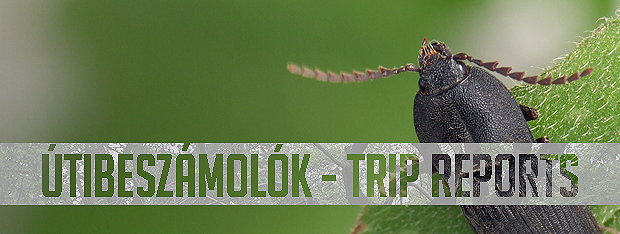
TRIP REPORTS
15-16.III.2012., Kõszeg mountains
After a lot of planning, I was able
to organize a trip with my friends to the Kőszeg Mountains in order to
looking for click beetle species new for the Hungarian fauna.

Six of us arrived in a sunny morning to West Hungary, to the Hörmann Spring. After a short breakfast we started searching in a nearby spruce grove.
(photo: Tímea Bán)
Dark, planted spruce forest, where our
major aim was to examine red rotten trunks and logs to find Ampedus species.

In the first minutes we found a handsome Ampedus balteatus (Linnaeus, 1758), which is so rare in Hungary. It is found only in the higher mountains of the country.
(photo: Tímea Bán)
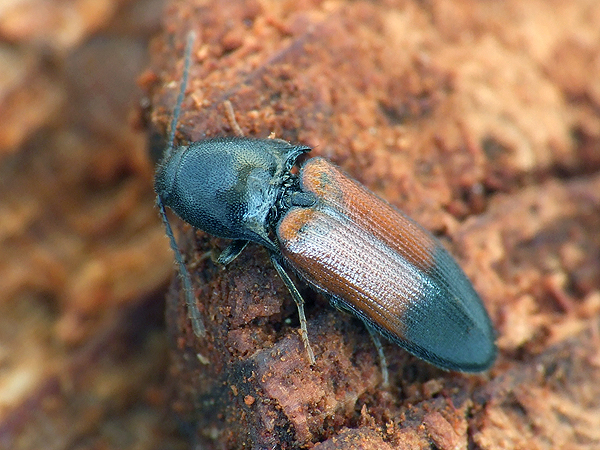
Ampedus balteatus (Linnaeus, 1758).
Also a nice species, mostly known from hollow oaks, but this one chose spruce.
Ampedus nigerrimus (Lacordaire, 1835).
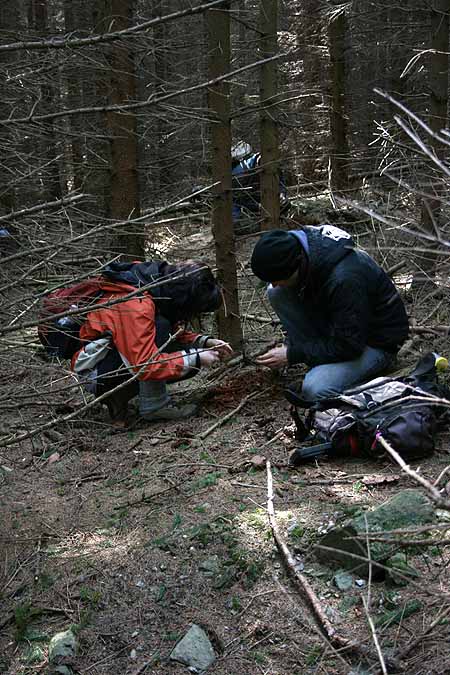
It finally happened: first find of Ampedus nigrinus (Herbst, 1784) in
Hungary! Although this area is well known among beetle collectors,
nobody found this nice species as yet, probably because of the small
size and its secret way life way. (photo: Tímea Bán)

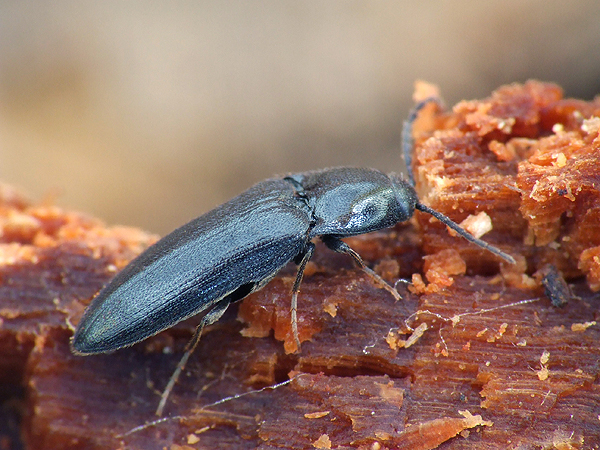
Ampedus
nigrinus (Herbst, 1784).
On our way to the Austrian border, we found ground beetles in rotten beech logs.
Carabus germarii Sturm, 1815.
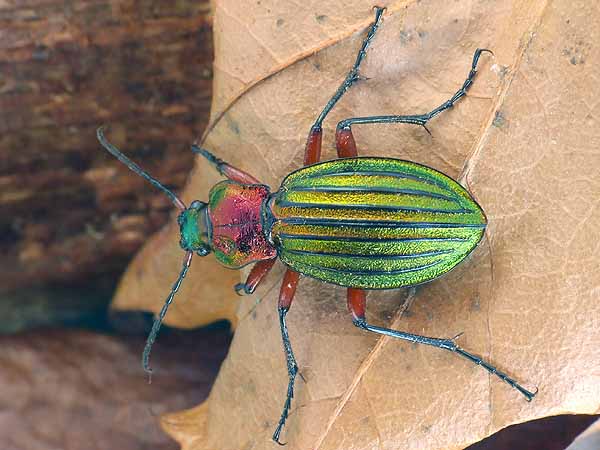
In Hungary, Carabus auronitens kraussi Vacher de Lapouge, 1898, lives only in the Kőszeg and Sopron Mountains.
Melanotus castanipes (Paykull, 1800) male, from a hollow beech.
Melanotus castanipes (Paykull, 1800) female.
We headed to higher areas, where I sifted leaf litter, and a very interesting beetle walked out from the material.
Necrophilus subterraneus (Dahl, 1807) lives on the ground, feeding on dead organic food. Lives only in the Kőszeg Mountains in Hungary.

Rhagium bifasciatum Fabricius, 1775 – from a spruce log.
(photo: Tímea Bán)
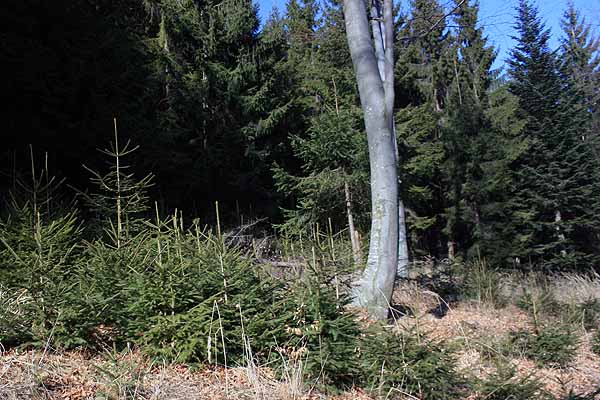
(photo: Tímea Bán)
Here we found Ampedus sanguineus (Linnaeus, 1758) and Ampedus elegantulus (Schönherr, 1817) in red rotten spruce trunks.
Archiearis
parthenias (Linnaeus, 1761).
In the evening we had dinner at a nearby village, Cák,
and we also found accommodation here.
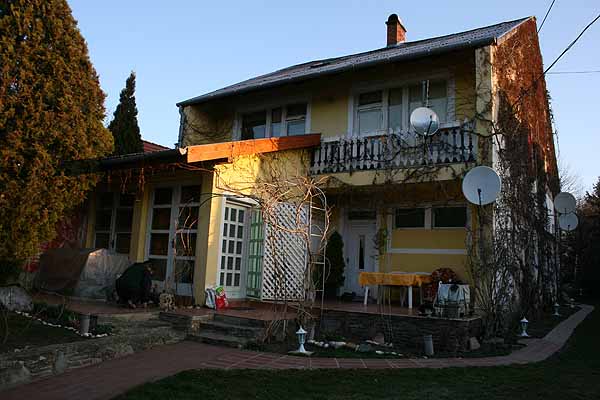
(photo: Tímea Bán)
Next day we made collectings in the nearby chestnut grove. My friends were looking for
Deroplia genei (Arragona, 1830) in the thin branches.

(photo: Tímea Bán)
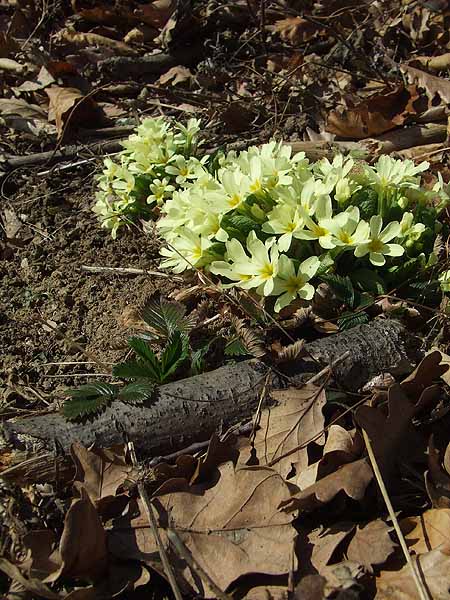
Primula vulgaris
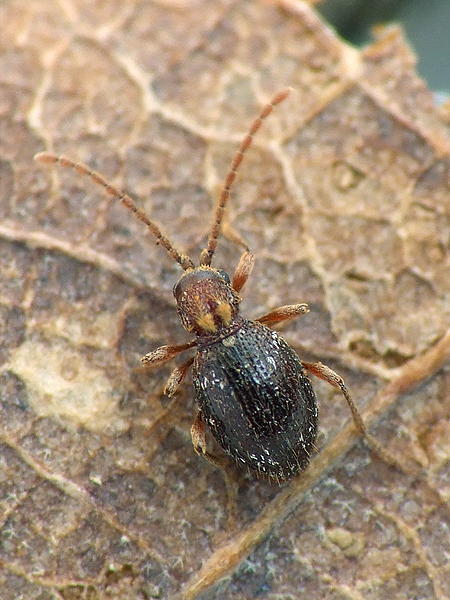
While sifting the debris accumulated beneath bark of dead trees, several spider beetles were found.
Ptinus schlerethi (Reitter, 1884)

Ptinus sexpunctatus Panzer, 1789.

Salpingus planirostris (Fabricius, 1787), a narrow-waisted bark beetle, beaten from dry branches.
Old chestnut near a forest road. Its circumference is nearly 5 meters. The hollow of this giant hides click beetles. (photo: Tímea Bán)
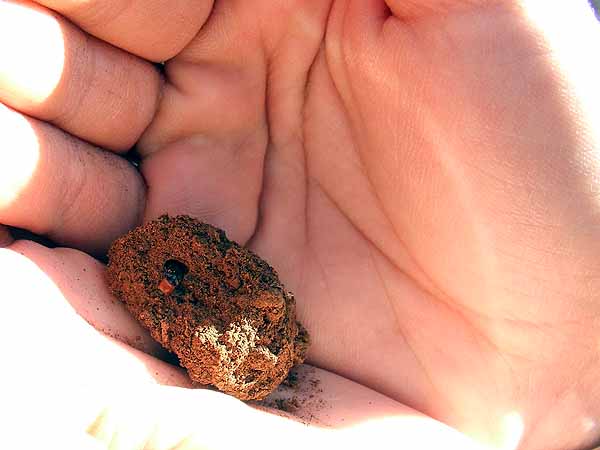
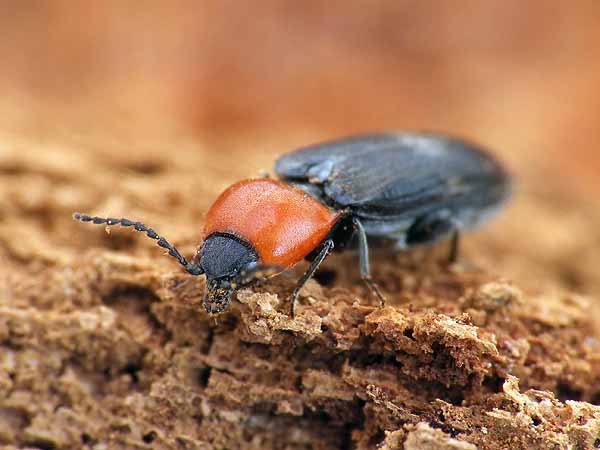
Cardiophorus gramineus (Scopoli, 1763).
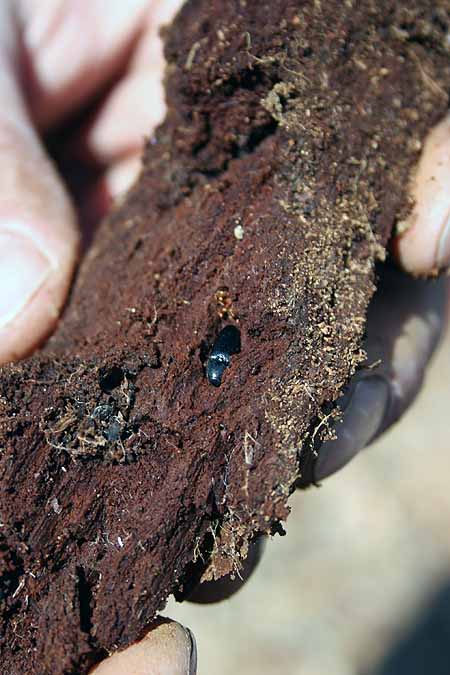
Ampedus nigerrimus (Lacordaire, 1835) .
(photo: Tímea Bán)

(photo: Tímea Bán)
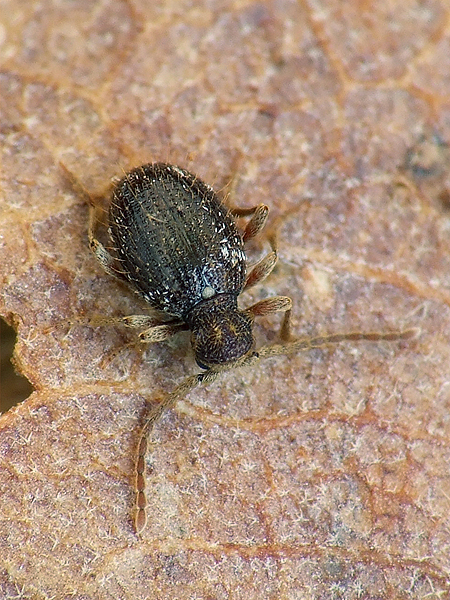
Ptinus pilosus P. W. J. Müller, 1821. Sifted from leaf litter.

(photo: Attila Kotán)
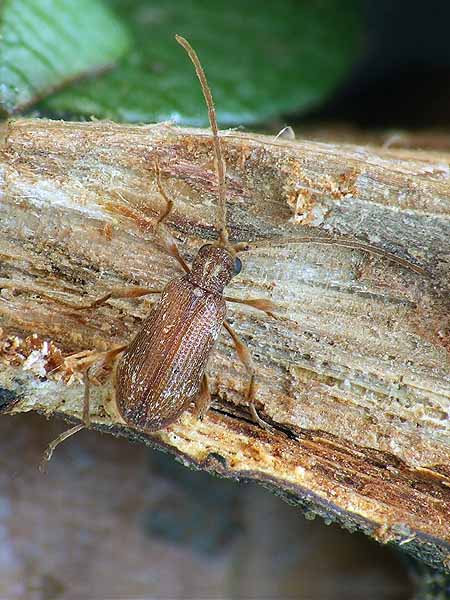
Ptinus fur (Linnaeus, 1758), another spider beetle, common in old houses and larders.

In the end of the day, we headed to home, after this nice and sunny trip.
(photo: Tímea Bán)
Update: The two click beetle larvae I collected in the first day, metamorphosed into adult beetles after twenty days at home.
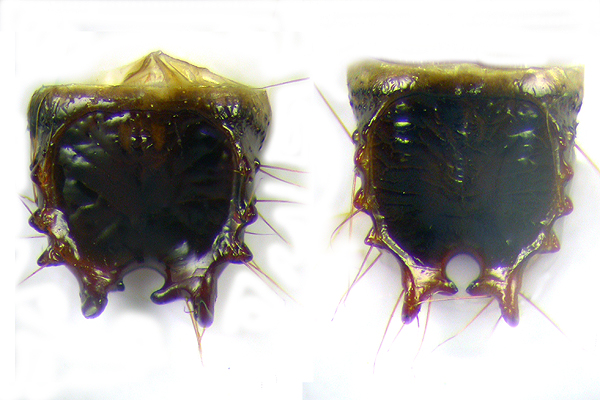
Pictures of the larval skins. On the left: Denticollis rubens Piller et Mittelpacher, 1783, which is very rare: only one date is known from this region of Hungary. On the right: Denticollis linearis (Linnaeus, 1758).
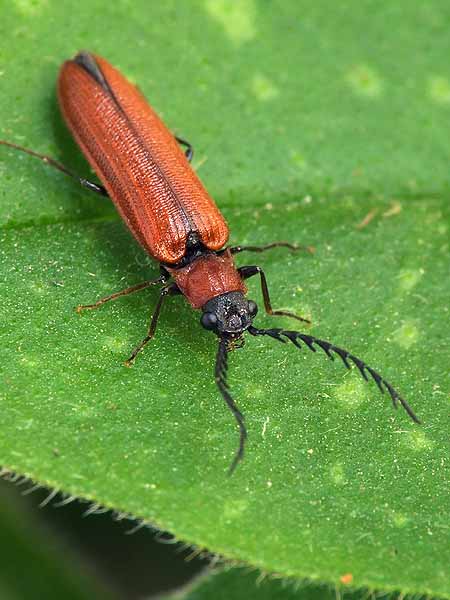
Denticollis rubens Piller et Mittelpacher, 1783 .

Denticollis linearis (Linnaeus, 1758).
Copyright
©
2009. Hungarian Natural History Museum,
Department of Zoology, Coleoptera Collection